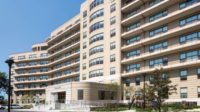The Red Line is the Massachusetts Bay Transit Authority’s workhorse “T” line—as the Boston-area subways are colloquially known—moving more commuters than any other in the system. Heading south from Alewife Station, in north Cambridge, the Red Line passes by Harvard University and the Massachusetts Institute of Technology (MIT) before crossing the Charles River to service downtown Boston and the South Shore. Earlier this year, NADAAA and the Boston office of Perkins&Will inaugurated a new headhouse along the line at the Kendall/MIT stop. Despite a rebrand in 1978 to include the institute’s acronym, most signs inside the station still only read “Kendall.” That identity crisis was at the root of the problem.
Unlike the Red Line’s Harvard stop, which opens onto a public square at the edge of that university’s Yard, MIT’s most recognizable symbol—architect William Welles Bosworth’s domed Building 10—is a half-mile away from its respective station. “You’d come up into a CMU bunker and ask: Where’s MIT?” says Harry Lowd, associate at NADAAA. In recent years, that venerable institution has expanded eastward, toward the T stop, replacing parking lots with a burgeoning tech and life-sciences hub. The central question became, as Lowd explains: “How do we design a headhouse and gateway to MIT, but still encourage passage through it and connect the Kendall Square neighborhood with the rest of Cambridge?”
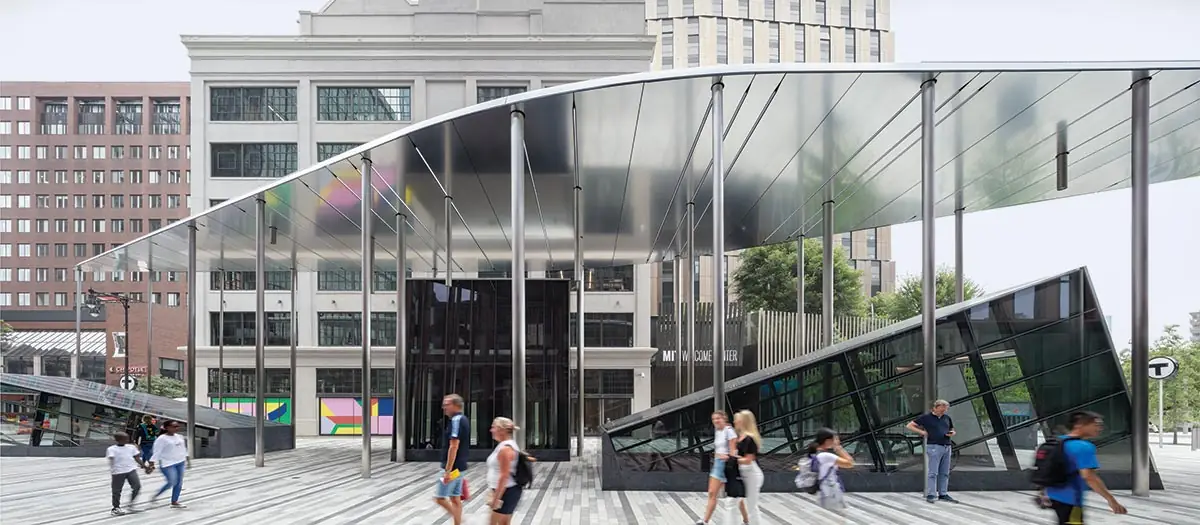
Pedestrians filter through the gateway (top of page), passing beneath a semireflective underside (above). Photo © John Horner, click to enlarge.
The team at NADAAA is no stranger to this slice of campus—the “gateway” sits next to Site 4, which the firm, again working with Perkins&Will, completed under a separate contract three years ago. That faceted, glinting tower—Cambridge’s tallest—houses graduate students and incorporates two century-old warehouses, adaptively reused as group study and social spaces, an innovation and entrepreneurship incubator, and a ground-floor admissions office, which importantly sits exactly where travelers exit the station.
Opposite NADAAA’s building, on the other side of the gateway, Weiss/Manfredi’s 17-story Site 5 accommodates the new MIT Press bookstore and the MIT Museum by Höweler + Yoon. To the north is Main Street (under which the Red Line runs) and a Marriott hotel beyond, and to the south is MIT Open Space, an often-bustling, art-filled 4¾-acre urban park by Hargreaves Jones that conspicuously hides an astonishing seven levels of subterranean parking. The location of the new headhouse, along the town-and-gown boundary, is a highly charged one.
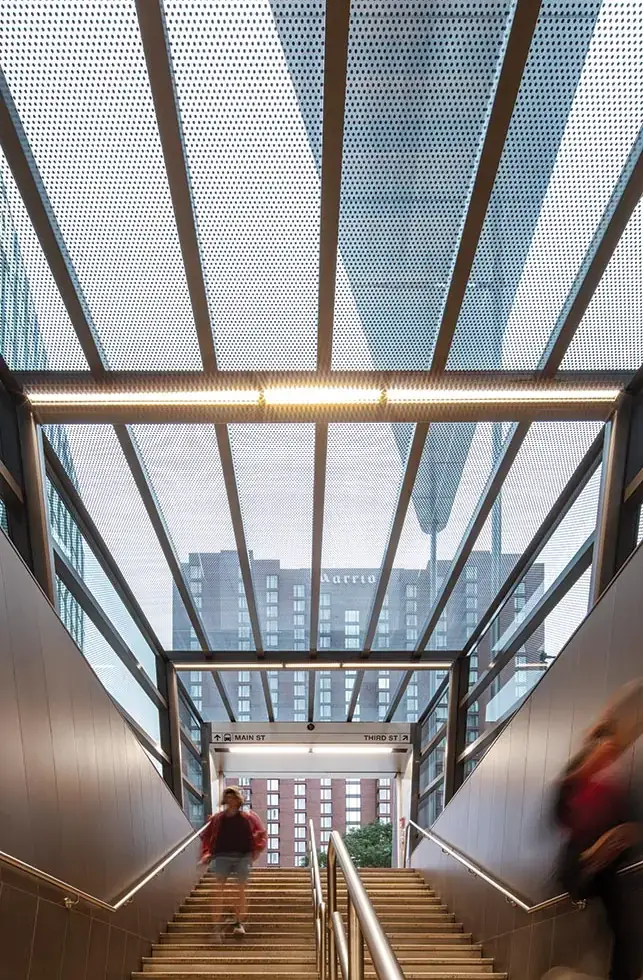
Three access points are clad in fritted glass. Photo © John Horner
The Kendall/MIT Gateway is not a portal in the traditional sense. “Normally, it’s a threshold, a door, a facade, a perpendicular plane to one’s path of travel,” says NADAAA principal Nader Tehrani. But that’s not possible here, he explains, because the distance between Site 4 and Site 5 is 76 feet. Instead, the team developed a geometric ensemble through which people can filter.
The approach architectonically acknowledges the needs and motivations of two very different clients. Falling under the jurisdiction of the MBTA are three precisely canted volumes—one enclosing a staircase, another accommodating an escalator, and the last housing an elevator—that peek up above the ground plane and lead to the station below. But beyond these access points, the street level is ostensibly MIT’s campus. A sleek, streamlined canopy, supported by a field of 26-foot-tall columns, hovers over the three prismatic kiosks to unify the composition. It is a fitting urban baldacchino for straphangers and students alike.
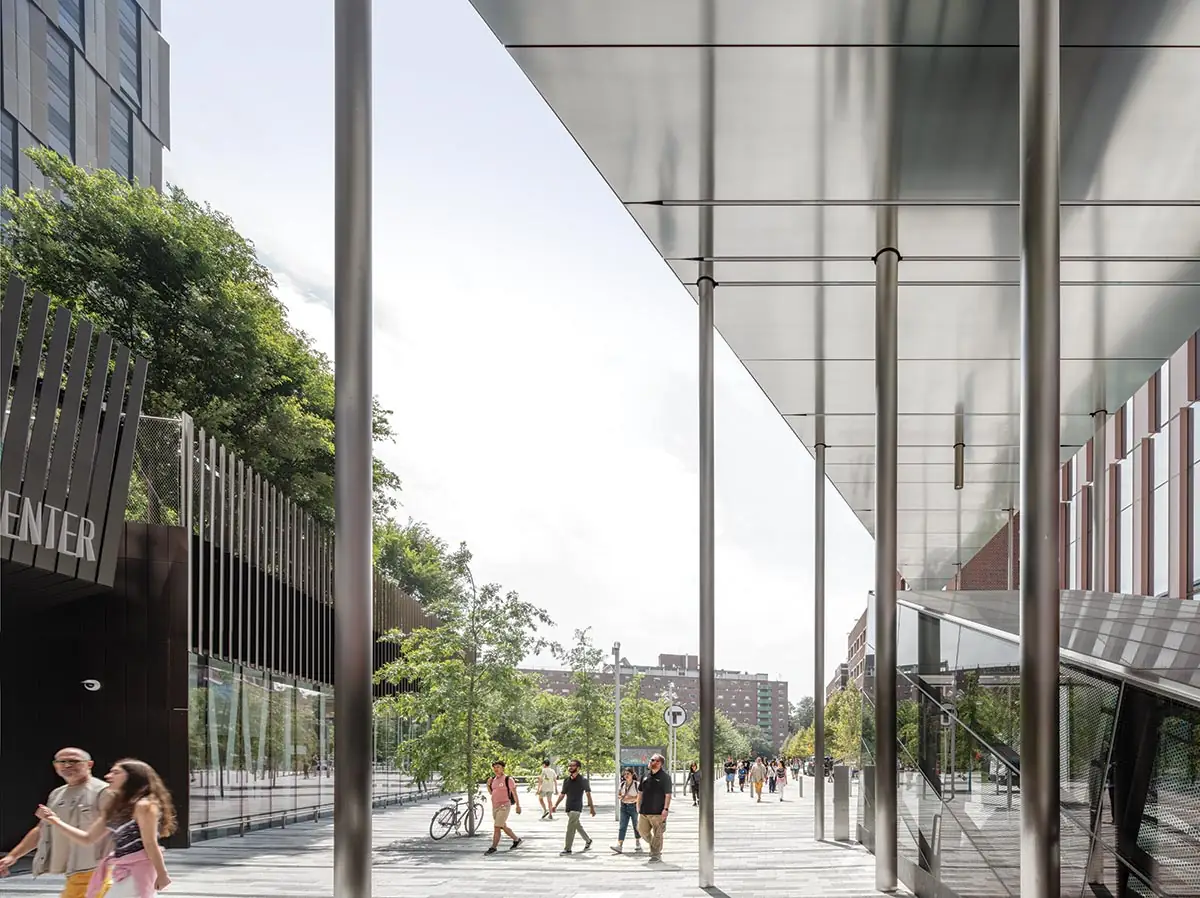
A field of columns echoes the trees on MIT Open Space. Photo © John Horner, click to enlarge.
Fabricating this winglike form, which is a rounded parallelogram in plan, would have proved daunting had the team relied on traditional construction methods, with hundreds, if not thousands, of pieces and all the attendant precision. “Looking at composite structures used in the maritime and aviation industries reduced complexity tenfold,” Tehrani says of the decision to partner with Maine-based shipwright Lyman-Morse.
At almost 159-feet long, the assemblage is the longest the boat builder has ever produced. The process largely resembled that of crafting a ship’s hull, albeit one turned upside down—fiberglass cloth, laid inside a CNC-milled mold, is reinforced with carbon fiber (where loads required it) and resin to create a monocoque, a shell with inherent structural properties. Bulkheads, or internal ribs, were installed to provide additional lateral support and to accommodate the canopy’s “guts” (connections to columns, lighting and data cables, and drainage). For logistical reasons, the shell was made in two pieces and shipped to Cambridge on an ocean-faring barge that traveled along the Atlantic Coast and through the locks of the Charles River. With the columns already erected, the two halves were hoisted, jostled into place, and connected in situ in a single day.
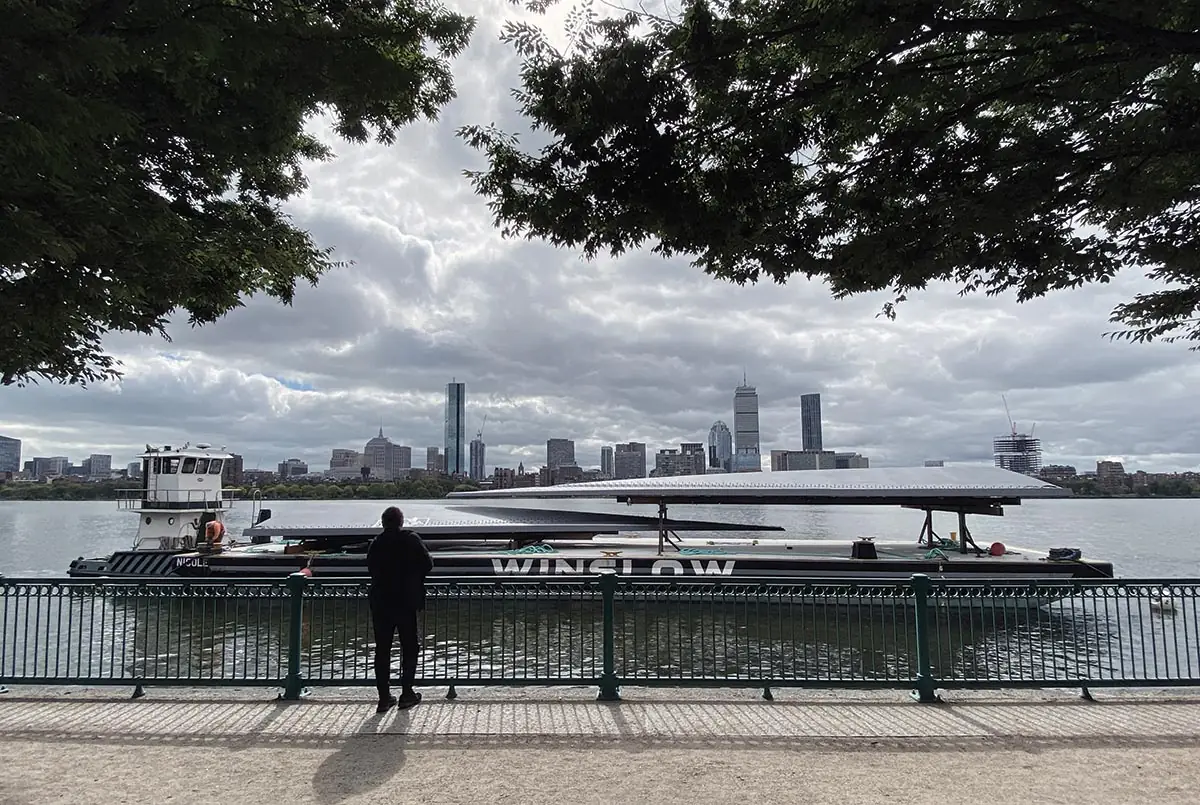
1
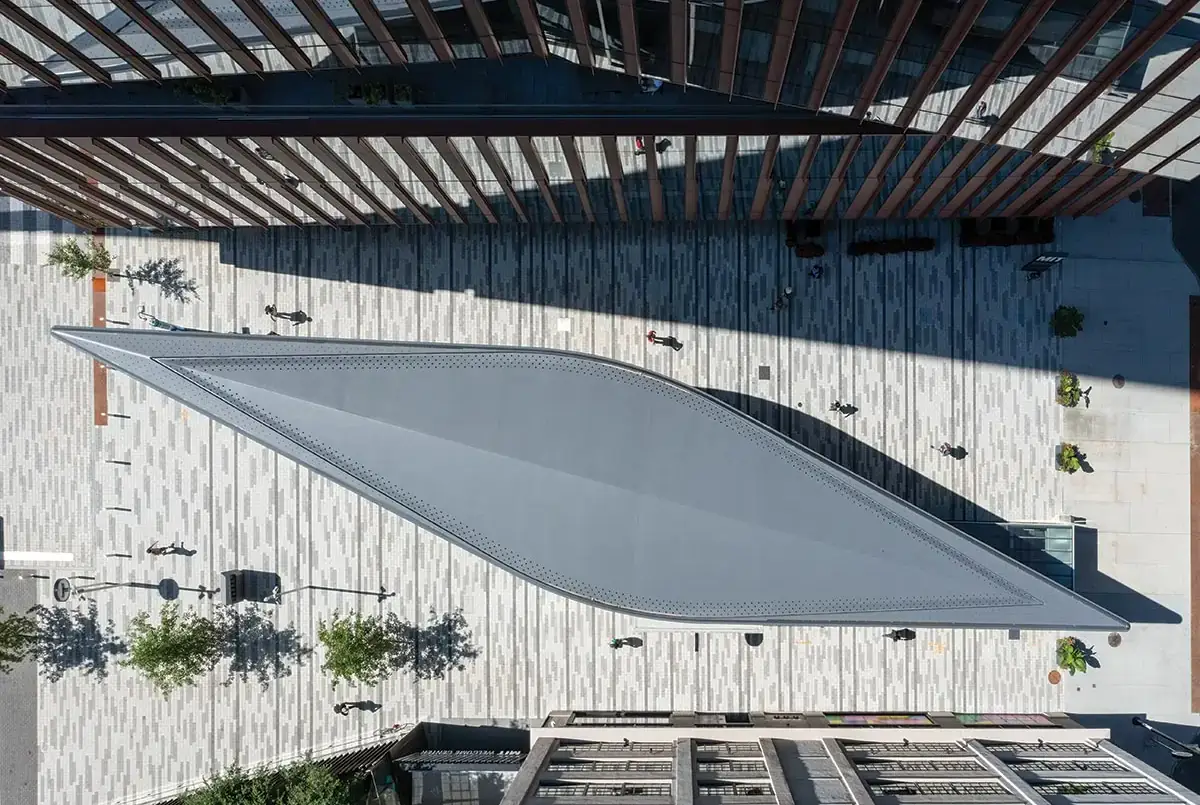
2
The canopy’s two halves were shipped on a barge (1) and connected in situ (2). Photos © Harry Lowd (1), John Horner (2)
Semireflective steel panels and programmable light strips enclose the underbelly. The resulting effect is subtler and more atmospheric than the spectacle of Norman Foster’s Ombrière in Marseille, France, which Tehrani and his team examined. But, given the many tall buildings around the Kendall/MIT Gateway and the high vantage points they provide, special attention was paid to the canopy’s top—a surface that, as a boat hull, would never be seen, but here is on full display. A keel-like spine accentuates its camber, while snow cleats dot the edges of the shell like industrial rivets.
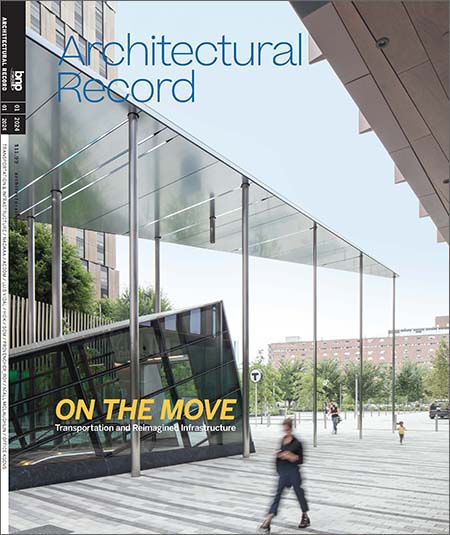
Photo © John Horner
From a structural standpoint, the inverted hull essentially operates like an airfoil. “It takes very little to support the weight. The problem is that it’ll fly away because of the wind. The columns work in compression, but they also work in tension to hold that baby down,” Tehrani adds. Although NADAAA explored a variety of column configurations, the final scheme is airy, with a handful of hearty columns (that conceal drainage and heat-tracing systems) near the canopy’s center, slender ones at the ends, and suspended stalactites with integrated LEDs that strategically illuminate the ground.
Across Main Street, a different team of designers, with a different vision, is realizing another headhouse. The MBTA might have missed an opportunity by not considering both sides of the stop as a single design problem—but, in the meantime, comers and goers can handily amble underneath the Kendall/MIT Gateway’s lustrous soffit and take in its tapered silhouette as they exit the station. It was never meant to be a gem, says Tehrani, but, coming near the conclusion of a campus expansion, “it is like the period at the end of a sentence”—one that has as much to say about urban planning as it does about local placemaking.
Lighting Installation at Kendall / MIT Gateway
Programmable LED strips designed by lighting consultant SoSo Limited illuminate the underbelly of the soaring canopy at NADAAA’s MIT/Kendall Gateway in Cambridge, Massachusetts. Video credit: SoSo Limited
Click plan to enlarge
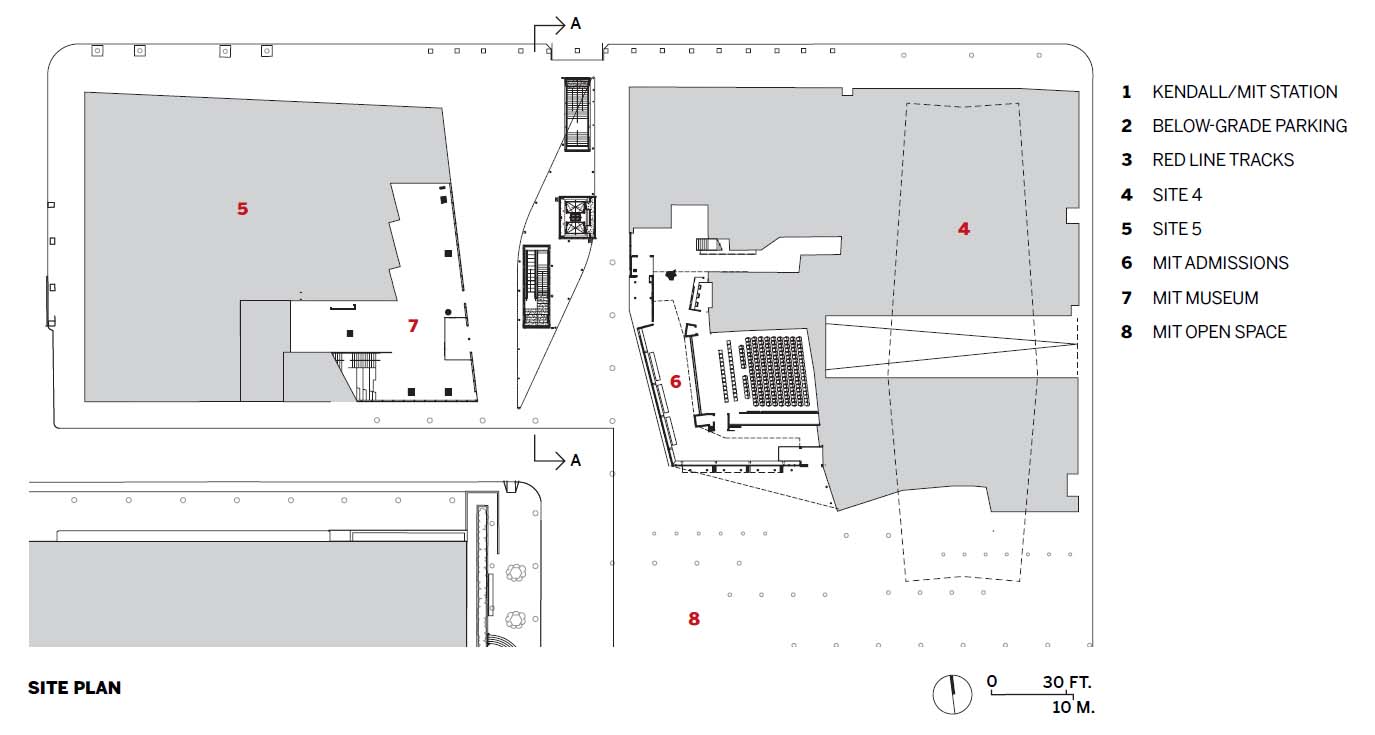
Click section to enlarge

Click detail to enlarge
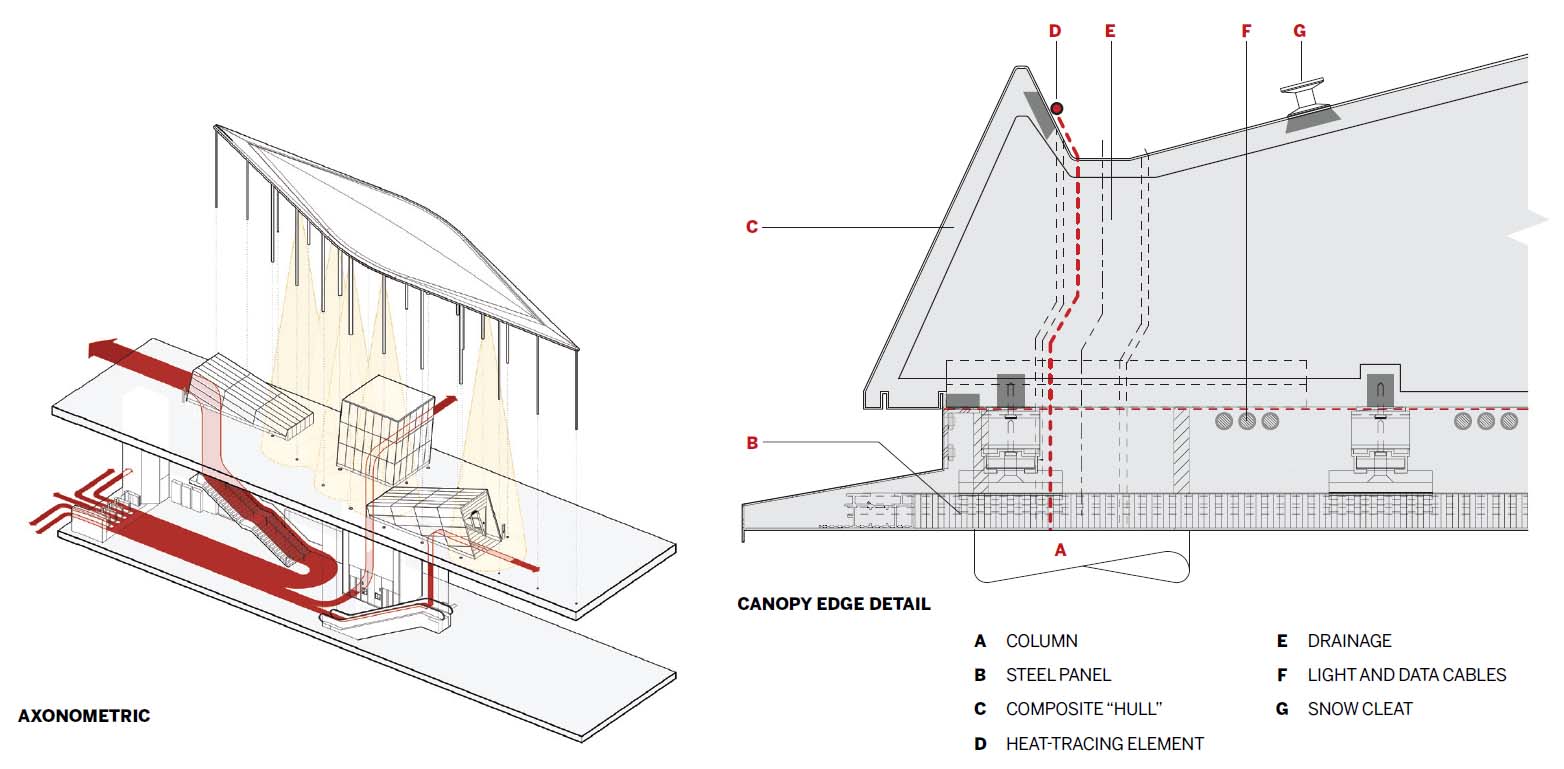
Credits
Architect:
NADAAA — Nader Tehrani, Katherine Faulkner, principals; Harry Lowd, Tom Beresford, project managers; Arthur Chang, Alex Diaz, Tim Wong, Nick Safley, Elias Bennett, Ali Sherif, Katie Solien, Ergys Hoxha, Luisel Zayas, design team
Architect of Record:
Perkins&Will — Robert Brown, principal; Sandy Smith, project manager; Ramsey Bakhoum, project architect; Marko Goodwin, Jeff Lewis, Matthew Pierce, Stephen Messinger, Josh Rathbun, James Lee
Engineers:
SGH, McNamara Salvia (structural); AHA Consulting Engineers (m/e/p/fp); Nitsch Engineering (civil); McPhail Associates (geotechnical)
Consultants:
Lyman-Morse (canopy and design assist); Hargreaves Jones (landscape);
SoSo Limited, Lam Partners (lighting); Jensen Hughes (code)
General Contractor:
Turner Construction Company
Client:
MITIMCo
Owner:
MBTA
Size:
2,700 square feet (above grade); 3,900 (below grade)
Cost:
Withheld
Completion Date:
July 2023
Sources
Steel Structure:
Capco Steel
Curtain Wall:
Linel
Cladding:
QC Facades (canopy underside)
Conveyance:
Otis (escalator), Delta Beckwith (elevator)
Paving:
Hanover
Lighting:
Standard Vision (canopy downlights)
Stone:
Neolith (sintered stone); Commercial Masonry (granite)








